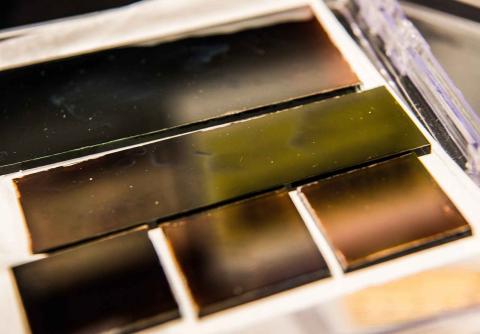Researchers at the U.S. Department of Energy's (DOE) National Renewable Energy Laboratory (NREL) developed a new perovskite ink with a long processing window that allows the scalable production of perovskite solar cells.

To create a perovskite film, a coating of chemicals is deposited on a substrate and heated to fully crystalize the material. The various steps involved often overlap with each other and complicate the process. One extremely critical stage requires the addition of an antisolvent that extracts the precursor chemicals, and thus create crystals of good quality. The window for this step opens and closes within seconds, which is detrimental for manufacturing due to the precision required to make this time window. NREL researchers were able to keep that window open as long as 8 minutes.
The formula for the precursor perovskite ink included a chlorine-containing methylammonium lead iodide precursor along with solvent tuning, coupled with an antisolvent, which could be deposited onto the substrate by either spin-coating or blade-coating methods. It was reported that both methods were tested and produced indistinguishable film morphology and device performance. Blade-coating might be more attractive to manufacturers because it can easily be scaled up.
The researchers tested one precursor ink containing excess methylammonium iodide (MAI) and a second containing added methylammonium chloride (MACI). The MACI proved most effective in reducing the length of heat treatment the perovskites require, cutting the time to about a minute compared to 10 minutes for the MAI solution.
Using blade-coated absorbers, NREL scientists made a four-cell perovskite module measuring about 12.6-square centimeters. Of that, 11.1-square centimeters were active in converting sunlight to energy and did so with a stabilized efficiency of 13.3%.
In February 2017, researchers at the University of Toronto developed a novel way to print perovskite solar cells easily and at a low cost.